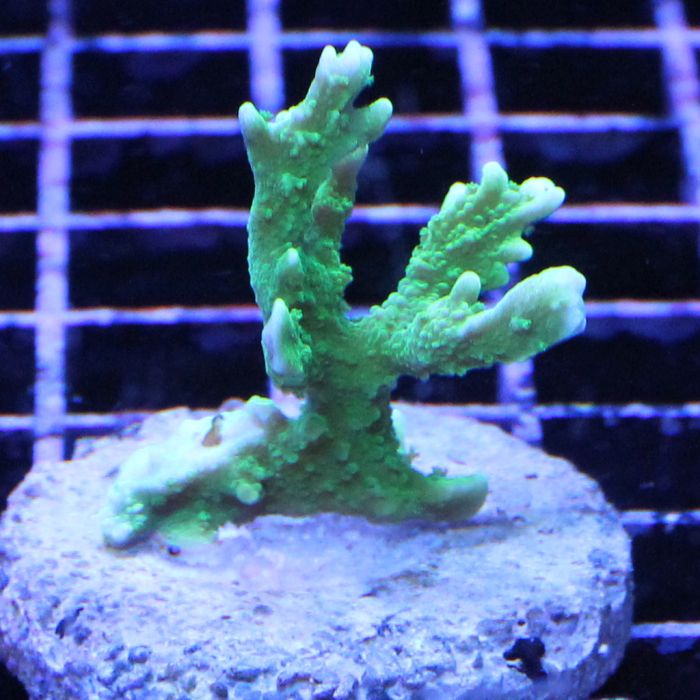Montipora - Elkhorn
Montipora require stable water quality ideally provided in a well-established aquarium over 6 months old. High levels of nitrate and phosphate are not tolerated and may cause browning; although low, stable levels are necessary for best growth and color. Alkalinity, calcium, magnesium and strontium are required for growth and should be checked regularly.
They are prone to many pests, most notably nudibranch which are very difficult to eradicate. Gorilla crabs, flat worms and vermetid snails can also damage this coral. All colonies should be dipped prior to adding to a display aquarium. Quarantine and removal of any substrate are also beneficial practices. It may be host to several species of beneficial crustaceans including Tetralia and Trapezia sp. crabs.
Newly acquired specimens should be acclimated to intense light levels slowly to avoid bleaching. Lower lighting may be tolerated but tends to cause browning. Those corals with bumpy surfaces require the highest water flow, while smooth corals may tolerate more gentle movement. Montipora are related to Acropora but tend to be much easier to keep.
Space should be provided between corals to allow for growth and expansion, as Montipora do not possess strong defensive filaments and may be stung by neighboring corals.
Montipora are popular corals available in many spectacular colors and growth patterns. It often grows into a bush of gnarly branches with fuzzy polyps sprinkled evenly over its surface. Random, turbulent water flow produces the most interesting colonies. It may be emerald to lime to lemon or any shade between.
This coral receives most of its energy by utilizing the photosynthetic algae contained within its tissues. It will also benefit from occasional feedings of fine zooplankton and coral snow.
Temperature swings are not tolerated and may lead to bleaching. Temperatures should never be allowed to reach 82F, which will surely damage the colony. For this reason many aquarists keep their temperature lower as a precaution, as low as 76F.
Intermixing with soft corals (especially leathers, mushrooms and Lemnalia) is best avoided, as many soft corals release potent chemicals into the water which can be detrimental to the health of small polyp stony corals.
Water flow should be strong and is best provided as turbulent flow with the use of a wave maker or surge action. Alkalinity, calcium, magnesium and strontium are required for growth and should be checked regularly.
- Difficulty: Intermediate
- Growth Speed: Medium - Fast
- Lighting: Medium - High
- Average Placement: Middle - High
- Water Flow: Medium - High
- Temperament: Peaceful
Customers who bought this also purchased
 Birdsnest CoralOut of stock
Birdsnest CoralOut of stock Hammer - Purple Tip BranchingOut of stock
Hammer - Purple Tip BranchingOut of stock Montipora - Forest FireOut of stock
Montipora - Forest FireOut of stock Cyphastrea CoralOut of stock
Cyphastrea CoralOut of stock Frogspawn - Bi-ColorOut of stock
Frogspawn - Bi-ColorOut of stock Pocillipora CoralOut of stock
Pocillipora CoralOut of stock
















